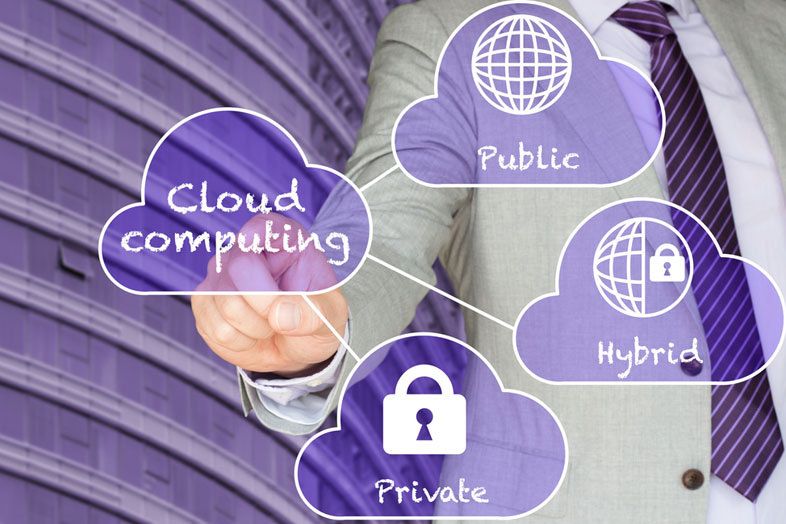
In this era of the hybrid cloud, businesses and enterprises face many challenges. Although moving to the cloud is a smart strategy for most organizations, it’s not necessarily an easy move. However, despite the challenges, working in the cloud is all but a must for any organization that wants to stay competitive. With so much at stake, businesses have no choice but to evolve and adapt.
Therefore, companies need to be resilient to meet the challenge of change head-on both internally and externally. In a hybrid cloud environment, data is no longer stored solely on site, but rather on site and in the cloud. For example, companies now use software applications or “as-a-service” programs instead of relying on all hardware on site. Thus, staying resilient in this business environment is more important than ever. In fact, even a small change can impact your entire operation. Therefore, it’s vital to know how to maintain business resiliency in the hybrid cloud era. Here are four important factors to help you stay resilient.
- Conduct assessments on current resiliency solutions – make changes accordingly. The first step in becoming more resilient to change is to assess your current resiliency plans and solutions. You must weigh the pros and cons of your plans and determine if it will meet your needs. If your resiliency solutions aren’t up to par, it’s time to take action and make the necessary changes. This could include a transition to a hybrid cloud environment. The key is to move away from labor-intensive business resiliency planning and more towards a proactive all-inclusive disaster recovery solution to better manage changes.
- Have contingency plans in place in case of a disaster or change. Even the best-laid plans can fail. No matter how much you plan and prepare, things don’t always as go expected. Change is constant and unanticipated disasters are sure to strike. Therefore, it’s important to have a contingency plan in place for all the “what-ifs” that can occur. This requires several important steps including keeping the plan as simple as possible. Your contingency planning should reduce risk as much as possible. Keep all employees informed and updated about the plan, including any revisions, to ensure they understand how to proceed should disaster strike. It’s impossible to prepare for every possibility, so having a well thought out and comprehensive contingency plan in place will make a huge difference in mitigating the effects of any changes or unforeseen disasters.
- Promote a culture that embraces change. Change is constant, but most companies and organizations aim to keep the status quo instead of evolving to meet the challenges of change. Although this approach may be easier, in order to remain relevant and competitive in the current business environment, you must be able to not only adapt to change, but embrace it as well. Embracing change means considering new ideas and processes that can transform your business for the better. The era of the cloud is full of change, especially as more organizations adopt a hybrid cloud strategy. By embracing change, your organization can stay ahead of the curve and be better prepared for the inevitable additional shifts that lie ahead. This allows your company to better adapt and excel in the midst of a constantly changing business environment.
- Understand the new definition of continuity. Organizations have always strived to promote continuity in their operations. However, in the current business environment, the standard definition of continuity is almost impossible to achieve. Organizations must accept that business conditions will fluctuate and that constant change is the new normal. In order to better prepare for this reality, organizations must have a continuity strategy in place. It starts with gaining executive level sponsorship for business continuity projects. Next, you expand it company wide and holistically analyze operational needs across multiple locations and departments. You must then identify the processes that need to be protected and apply the same continuity approach to your entire business including a centralized structure of governance.
Is Your Organization Ready for the Hybrid Cloud Era?
Staying competitive in the current business environment requires resilience and flexibility. Any organization that wants to remain relevant must be able to adapt and overcome challenges. Therefore, you must have effective resiliency solutions in place. You also need to prepare contingency plans to respond effectively to incidents of unexpected change or disaster. That requires developing a culture that embraces change and continuity.
Photo Credit: martinlouis2212 Flickr via Compfight cc
This article was first published on New Era Technology.
New Era Technology works with customers as a trusted technology adviser. We help customers work faster, smarter and more securely in a rapidly changing digital world. More than 4,500 customers worldwide rely on collaboration, cloud, data networking, security, and managed service solutions from New Era to accelerate time to market, speed innovation, increase productivity, and create better learning experiences.

